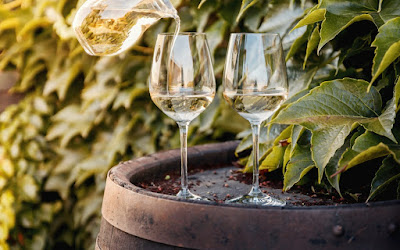What Is Acidity in Wine
Wine is a complex drink that is made up of many different compounds. One of these compounds is acidity, which is like the skeleton of the composition of a wine. Acidity is a measure of the amount of acid in the wine and it is measured in pH units. In this article, we will provide several helpful suggestions to order wine online efficiently.
Acidity is vital to the taste and aroma of all red and white wines, delivering its distinct crispness and freshness. The acidity of the wine is noticed by the delicious sensation on the side of the tongue. The level of acidity is a distinguishing trait of good quality wines, though it can make a wine sour like lemon juice if it is too high, too little acidity will make the taste feel flat. A balanced amount of acidity is the key to making a perfect glass of wine.
In this article, we’ll take a closer look at what acidity is and how it affects the taste of wine. We’ll also give you some tips on how to identify white and red wines with high acidity levels at an online wine store.
Acidity in wine originates from the grapes employed for winemaking. This is a characteristic trait of fruits, specifically grapes. Variations in grape types and their respective growing conditions directly impact the acidity levels of the finished wine. As same as other fruits, grapes become sweeter as they ripen and have a less acidic flavor. On the pH scale, the acidity in wine is ranked between 2.5 and 4.5.
Wine generally contains four main types of acids, tartaric acid, citric acid, lactic acid, and malic acid. These two acids, malic and tartaric, together constitute the majority of the acidity present in the wine.
Grapes are the most significant source of tartaric acid, which significantly influences the taste of wine. Additionally, this so-called fixed acid helps preserve color and acidity. However, the amount of tartaric acid present in different grape varieties may be influenced by various factors such as the climate and soil in which they grow.
Apart from tartaric acid, malic acid is the other most dominant acid found especially in white wine. Malolactic Fermentation (MLF) is a process where the malic acid transforms into lactic acid, thereby lowering the total acidity, or so called low ph wine. As a result of MLF, the wine acquires a richer texture and smoother sensation on the palate. This is why you can see this MLF in the descriptions of white wines in a wine store.
Apart from these types of acids, there is a wine fault with acidity. Volatile acidity is considered an important wine fault if several acids, but primarily acetic acid occur excessively through oxidation during the winemaking process. Acetic acid cause wine to smell like vinegar, and ethyl acid to smell like nail polish and acetone. At low levels, these acids may contribute to the character of fruity flavors like in sweet and natural wines or long-fermented wines like Barolo but excess amounts make wine unpleasant and also may occur together with oxidation.
Factors that Affect Wine Acidity
The acidity of wine varies, or ph level based on grape variety, maturation methods, and vinification techniques. Before you order wine from an online wine store, knowing these tips would be helpful. Grapes are grown in colder climates generally possess more acidity than those cultivated in warmer climates, whereas tropical varieties tend to create full-bodied wines with low acidity. Red wines usually possess lower levels of acidity, whereas white wines are usually more acidic. If someone suffers from acid reflux, it is best to opt for wines with a low acidity content, such as Merlot.
The longer grapes remain on the vine, the higher the sugar content, yet the lower acidity. A winemaker can thus decide when to begin harvesting depending on the desired acidity level of the wine.
Acidity Effect on Aging
Additionally, the acidity especially in a red wine impacts its aging. Research has shown that the key element for successful aging is acidity. This required acidity for aging gives a hint for a buying guide. If you prefer white wines from a cooler region, they would likely be more capable of aging due to their high acidity and have the potential to gain complexity over time. For example, a white wine grape such as Riesling from Germany could potentially age up to 20 years. Semillon, Chenin Blanc, Pedro Ximénez, and Gewürztraminer white and red wines are other known ones in terms of age ability. Champagnes’ high acidity, sugar, and CO2 acting as an antioxidant make it ageable as well. Varying in variety, matured white wines offer nutty, dried fruit, petrol, tobacco, and honey aromas.
Sipping the wine quickly is a widespread mistake during tastings because receptors do not operate at the same speed. Therefore, it is necessary to keep the wine on the palate for a minimum of 15 seconds to be able to fully assess it.
Acidity in wine, especially in white wine can be highlighted by serving at cooler temperatures. This is why lighter and more acidic wines - such as Pinot Noir among red wines and Sauvignon Blanc or Pinot Grigio among whites - are best served at a lower temperature than their richer, less mouth-watering counterparts.
When it comes to wine pairing with food, titratable acidity plays an important role. This is one thing that you should know before ordering wine online for a dinner. Acidic wine brings a tangy sharpness that complements virtually any dish. The high-acid variety white wine grapes are known for their crisper taste, while lower-acid white wines are much mellower and rounded.
For our other useful and interesting new articles, visit our blog page.




Comments
Post a Comment